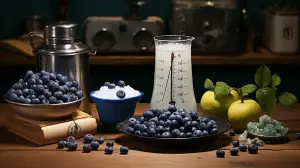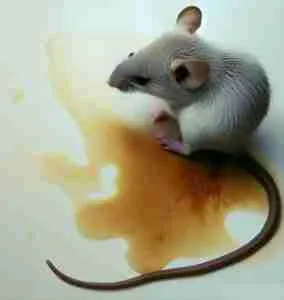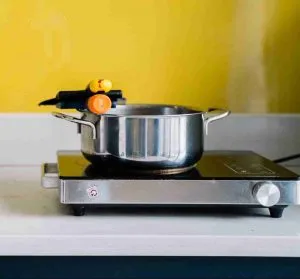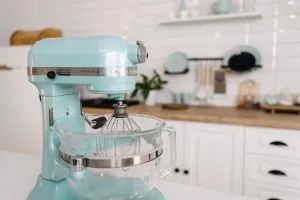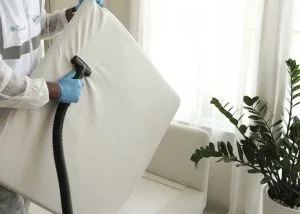Contents
ToggleKey Takeaway:
- Understanding the dangers of mold: Exposure to mold can cause health problems such as allergies, respiratory issues, and infections. It’s important to take mold seriously and take steps to protect yourself.
- Should I throw away moldy dishes? The condition of the dish and the type of material it’s made of will determine if it’s safe to clean and reuse. Porous materials, such as wood and plastic, should be thrown away if they are moldy, while non-porous materials, such as metal and glass, can be safely cleaned and reused.
- How to clean moldy dishes: Use hot, soapy water, and a scrub brush to remove visible mold from non-porous dishes. For porous materials, disposal is the best option, but if you must clean them, use a bleach solution to kill the mold and prevent regrowth.
Introduction
The importance of properly disposing of moldy dishes is crucial in maintaining a safe and healthy living environment. Neglecting this responsibility can lead to various health hazards and food contamination. It is important to understand the risks of consuming moldy food and ensure the proper disposal of contaminated dishes to prevent further spreading. By taking necessary precautions, such as properly washing and disinfecting surfaces, one can prevent the growth of mold and protect their health. Remember to regularly check for mold growth and dispose of affected dishes immediately.
Understanding the dangers of mold
Mold can pose serious health risks, making it crucial to understand its dangers. Inhaling mold spores can irritate the respiratory tract, causing coughing, wheezing, and throat irritation. Prolonged exposure can result in severe allergic reactions and even trigger asthma attacks. It is essential to remove mold from affected surfaces, but if it has penetrated porous materials like dishes, disposing of them may be the safest option. To ensure your health and well-being, it’s crucial to understand the potential dangers of mold and take necessary precautions. According to the article “Should I Throw Away Moldy Dishes,” mold on dishes can be a significant cause of concern for human health if not handled correctly.
Different types of molds

As I was cleaning out my kitchen cabinets, I found a few moldy dishes that had been sitting at the back for a long time. As I debated whether to throw them away or wash them, I realized that I knew very little about the different types of molds. After conducting some research, I found that not all molds are created equal. In this piece, we’ll go over the various types of molds and help you understand which ones are safe for consumption and which ones could pose health risks. We will also dive into the world of mycotoxins and the possible dangers they pose to our health.
Safe molds used in food production
Certain strains of mold are safe for food production. These molds are used intentionally to create certain types of products, such as certain types of cheeses and fermented foods. In fact, some molds can even provide health benefits such as boosting the immune system or aiding digestion. However, it is important to note that proper safety measures must be taken when working with molds in food production to ensure that only safe strains are used.
If you’re dealing with food items that tend to clump and possibly attract mold, like spices, learn how to keep your spices from clumping.
For example, Penicillium roqueforti is a type of mold commonly used in the production of blue cheese. This mold is inoculated into cheese during production and controlled conditions are maintained to allow the mold to grow. The resulting product is safe for consumption as long as it is properly stored and handled.
It is important to distinguish between safe and harmful molds in food production. Harmful molds can produce mycotoxins which can cause serious health problems if ingested over time. It is essential to follow strict guidelines when working with molds in any aspect of food production.
Sources indicate that some strains of mold have been linked to respiratory issues in humans and pets. Vigilantly checking for signs of cross-contamination, especially on dishes used within a day, could save you from such incidences. Be wary of these molds, they’re not only unfashionable but also hazardous to your health.
Molds that produce mycotoxins and their health effects
Certain types of molds produce mycotoxins, which are toxic compounds that can cause adverse health effects in humans. Exposure to mycotoxins can occur through inhalation, ingestion, or contact with the skin. Some common symptoms include respiratory issues, skin irritation, and gastrointestinal problems.
Mycotoxins can be produced by various molds such as Aspergillus, Penicillium, and Fusarium species. They are often found in moldy food items like bread, nuts, and fruits. Mycotoxins are also common in water-damaged buildings and humid environments.
It is important to identify mold-infested dishes that contain mycotoxins and dispose of them properly to reduce exposure risk. The Environmental Protection Agency recommends discarding porous materials like plastic containers, wood utensils, or cutting boards that have come into contact with mold. Non-porous items like glass or metal can be salvaged by washing them thoroughly with soap and hot water.
In order to avoid potential health risks posed by molds that produce mycotoxins, it is necessary to take proactive steps to prevent mold growth on dishes. This includes keeping dishes clean and dry at all times, using proper ventilation when cooking or showering, and promptly cleaning up any spills or leaks. Don’t let the fear of missing out push you into the dangers of exposure-risk from molds that produce mycotoxins – Be cautious about your dishes!
It is crucial to prevent mold growth in all parts of your home, not just on your dishes. Here’s a guide on how to get rid of mold in your bathroom ceiling.
Before you eat off of moldy dishes, ask yourself: is saving these dishes really worth risking my health?
Should I throw away moldy dishes?
As a home cook, I find myself debating whether to throw out moldy dishes or reuse them. While mold on food is a clear indication of spoilage, is it the same case for dishes? In this discussion, we’ll be looking at how to determine whether dishes with mold can be cleaned or should be thrown away. We’ll explore the condition of dishes that should be thrown away and the types of materials that are safe to reuse. By the end of this article, you’ll have a clearer perspective on how to deal with mold on your dishes.
According to the National Institutes of Health (NIH), mold can cause allergies, asthma, and other health problems, so it’s essential to know how to handle this issue properly.
Condition of dishes that should be thrown away
Dishes that have a high degree of mold growth to the extent that it is visible on all parts of the tableware should be thrown away immediately. This is due to the fact that cleaning such dishes may not remove all the mold spores, and they may remain embedded in crevices.
- Dishes with extensive mold growth
- Dishes with porous surfaces like clay pots or wooden bowls
- Dishes with cracks and crevices where mold can grow and hide
- Dishes with a strong smell of mold, even after washing
- Dishes that have been exposed to toxic molds producing mycotoxins
- Disposable dishes made from materials such as paper, cardboard, and foam since these materials provide an ideal environment for mold growth.
Additionally, dishes that have been contaminated by certain types of molds known to produce mycotoxins should also be disposed of. The health effects associated with exposure to mycotoxins are diverse and include respiratory problems as well as immunological issues.
Pro-tip: To avoid throwing away too many dishware sets due to excessive mold growth, it is advisable to maintain proper hygiene practices in the kitchen area and ensure that all dishware is thoroughly dried before being put away. Dealing with bad smells, whether from moldy dishes or skunk smell in your house, should always be addressed immediately to prevent health risks.
Keep your plastic and glass, toss the wood – a guide to safe materials for reusing moldy dishes.
Type of materials that are safe to reuse
When dealing with moldy dishes, it is essential to know which type of materials are safe to reuse. Listed below are six types of materials that are safe to reuse:
- Glass
- Ceramic
- Stainless steel
- Aluminum
- Plastic (if it can withstand boiling water)
- Silicone
It is crucial to understand that even if a material is considered safe to reuse, cleaning it thoroughly is still necessary. Moreover, it is crucial to ensure there are no visible signs of mold contamination.
It is pertinent to note that reusing moldy dishes can pose health risks, particularly if they are made from non-recommended materials or objects with deeply ingrained mold and mildew.
Apart from dishes, you should also focus on keeping your kitchen appliances clean to prevent mold growth. Learn how to deep clean your air fryer.
According to the article ‘Cleaning Moldy Dishes,’ one should always prioritize their hygiene and whole-body health while cleaning or reusing any equipment.
Giving your dishes a good scrub is the key to saying goodbye to moldy grime.
How to clean moldy dishes

When faced with moldy dishes, it can be tempting to simply toss them in the trash. However, this may not always be necessary. With the right approach, it’s possible to effectively clean moldy dishes and prevent the spread of harmful bacteria. To get started, make sure you have the necessary supplies at hand. From there, follow these step by step instructions for cleaning moldy dishes and restoring them to a safe, usable state.
Supplies needed for cleaning
To clean moldy dishes, having the right supplies is crucial. These are the necessary items you would require:
- Cleaning solution or disinfectant
- Gloves to protect your hands from any potential contact with the mold spores and cleaning solution
- A soft-bristle brush or sponge to scrub off the mold without damaging the surface of the dish
It’s important to use a cleaning solution that works on molds and disinfects at the same time. A bleach-based cleaner can be used for glassware, ceramics, porcelain or even enamel kitchen tools like Dutch ovens and bowls.
When dealing with wooden utensils, a vinegar-based mixture can help. Mix equal parts white vinegar and water and soak them in it before cleaning them as usual. Discard any wood items that show signs of cracking or warping.
Always remember to wear gloves to avoid any skin irritation that might occur while handling the cleaning solution or moldy dishes.
One other point to note is, after washing, rinse thoroughly with hot water and let it dry completely before using it again.
I’ve had a friend who discovered mold growth in her favorite ceramic cup when she took it out of storage. Rather than throwing it away, she used diluted bleach with hot water and soaked it for an hour before cleaning it thoroughly. The cup looked brand new again!
Cleanliness is next to godliness, and this step-by-step process will ensure your dishes are heavenly and mold-free.
Step by step process of cleaning moldy dishes
Cleaning moldy dishes requires a careful and detailed approach to ensure that all traces of mold are eliminated. A proper ‘Step by step process of cleaning moldy dishes’ involves using specific supplies and following a thorough cleaning technique to avoid any health hazards.
- Gather Supplies: Before starting the cleaning process, gather necessary supplies such as dish soap, gloves, scrub brush, hot water, vinegar, and baking soda.
- Wear Gloves: Wear gloves to prevent any direct contact with the contaminated dishes.
- Scrub the Dishes: Scrub each dish thoroughly using a scrub brush to remove the visible mold. Ensure that every part of the dish is cleaned properly.
- Sanitize the Dishes: After cleaning, sanitize each dish separately. Immerse them in hot water mixed with detergent or white vinegar for at least 10 minutes. Rinse off with clean water and air dry.
- Use Baking Soda: To eliminate any remaining odor from the dishes mix baking soda with water and use it to thoroughly wipe each dish. Rinse with clean water and let it air dry properly before usage.
It is imperative to dispose of dishes that have been extensively damaged by mold, as they can pose serious health risks. It is also important to be cautious while cleaning fragile or valuable dishes as they may require specialized cleaning techniques. For stubborn stains or spills, like those in your oven that can also become a breeding ground for mold, check out this guide on how to deal with oven spills
Pro Tip: Regularly inspect your kitchen utensils for any signs of mold growth; prompt intervention can significantly reduce health hazards associated with consuming contaminated food items.
Conclusion: Bottom line on cleaning moldy dishes
Moldy dishes can pose a health risk, and it is advisable to clean them promptly. Using hot, soapy water is effective in removing most mold spores. It is also recommended to use bleach or vinegar to disinfect dishes. Moreover, a regular cleaning routine using a countertop dishwasher can also help prevent the growth of mold.
Prevention is key, so it’s best to store dishes in dry, well-ventilated areas and avoid leaving them in the sink for too long.
Proper cleaning techniques can help keep you healthy and avoid the need to throw away moldy dishes. As such, it is crucial to prioritize dish hygiene and cleaning routines.
Five Facts About “Should I Throw Away Moldy Dishes?”:
- ✅ Safe molds like Penicillium mold and Koji molds are intentionally used in food production and consumption. (Source: Team Research)
- ✅ Many types of mold produce mycotoxins that can cause sickness, liver disease, and even cancer or immune system problems if consumed chronically. (Source: Team Research)
- ✅ Whether to throw away moldy dishes or not depends on the condition and type of material of the dishes. (Source: Team Research)
- ✅ Non-porous materials like glass, porcelain, stainless steel, and aluminum are the best type of moldy dishes to clean and reuse. (Source: Team Research)
- ✅ To clean moldy dishes, protect yourself with a mask, gloves, and apron and use cleaning solutions like dishwashing soap, white vinegar, baking soda, or bleach with plenty of hot water. (Source: Team Research)
FAQs about Should I Throw Away Moldy Dishes
Can I clean moldy dishes and reuse them?
Yes, you can clean and reuse moldy dishes made of non-porous materials like glass, porcelain, stainless steel, and aluminum. However, if the dishes are cracked or chipped, it is best to throw them away as mold can seep into these areas.
What are the health risks of using moldy dishes?
Moldy dishes can cause sickness or even death if consumed. Mycotoxins, toxins produced by some molds, can lead to stomach problems, acute liver disease, cancer, or immune system problems depending on the amount consumed and a person’s age and health. Individuals with respiratory allergies to mold may also have an allergic reaction if they consume or inhale them.
What cleaning solutions can I use to clean moldy dishes?
You can use dishwashing soap, white vinegar, baking soda, or bleach in hot water to clean moldy dishes. If you prefer not to use bleach, vinegar or baking soda is non-toxic but an effective cleaner. You can also use your dishwasher to clean the dishes with your usual dishwashing chemical after the first wash with soapy water.
What types of dishes should I throw away if they are moldy?
Porous materials like clay, wood, Styrofoam, or plastic dishes should be thrown away if they are moldy as they are extremely difficult to clean. Non-porous materials like glass, porcelain, stainless steel, and aluminum can be cleaned and reused if they are not cracked or chipped.
How can I prevent mold from growing on my dishes?
You can prevent mold on your dishes by storing them properly in a dry and clean place, washing them regularly with soap and water, and avoiding leaving dirty dishes piled up for extended periods. You can also sanitize your dishes by soaking them in hot water with bleach or vinegar for at least 15 minutes.
Can moldy dishes contaminate my dishwasher?
Yes, moldy dishes can contaminate your dishwasher and lead to mold growth inside the machine. Therefore, you should always clean off as much mold as possible before putting the dishes in the dishwasher and run a hot cycle with your usual dishwashing chemical as a final step.
Additional Reading
For those interested in exploring more household cleaning, maintenance, and safety tips, here are some insightful articles that cover a wide range of topics:
- Making Your Own Shower Splash Guard: Looking for a DIY project that can keep your bathroom cleaner? This guide shows you how to create a shower splash guard, helping to prevent water from spilling onto your bathroom floor.
- Removing Hydraulic Fluid from Clothes: Dealing with tough, greasy stains? This article guides you through the process of removing hydraulic fluid from your clothing.
- Understanding Which Pans Can Go in The Oven: Not all pans are oven-safe. Read this guide to ensure you’re using the right cookware for your baking and roasting needs.
- Using Cast Iron on Induction: If you’re switching to induction cooking, learn whether your beloved cast iron cookware is compatible in this insightful piece.
- Knowing What You Can Put in The Microwave: Microwaving inappropriate materials can be dangerous. Find out what items are microwave-safe to ensure your kitchen safety.








